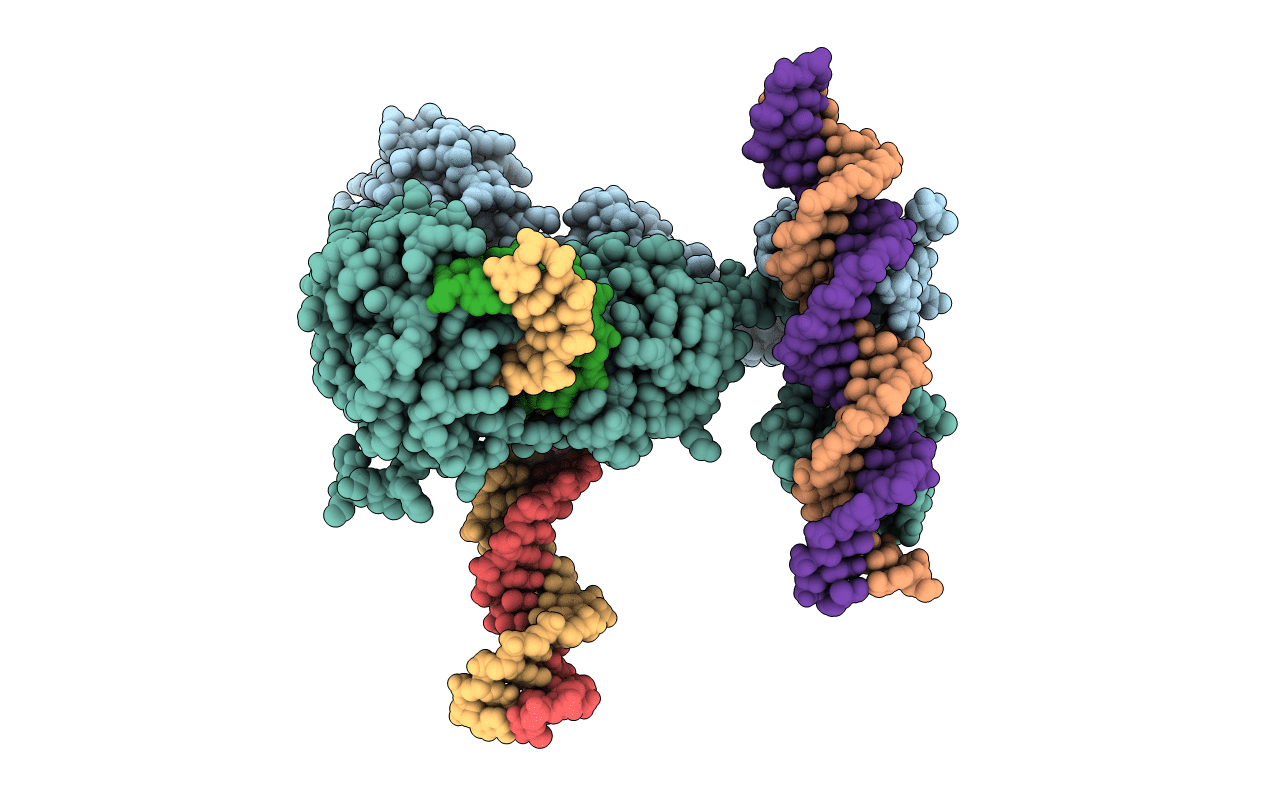
Deposition Date
2005-03-03
Release Date
2005-06-28
Last Version Date
2024-10-30
Entry Detail
PDB ID:
1Z1B
Keywords:
Title:
Crystal structure of a lambda integrase dimer bound to a COC' core site
Biological Source:
Source Organism:
Enterobacteria phage lambda (Taxon ID: 10710)
Host Organism:
Method Details:
Experimental Method:
Resolution:
3.80 Å
R-Value Free:
0.29
R-Value Work:
0.24
R-Value Observed:
0.24
Space Group:
C 2 2 21


